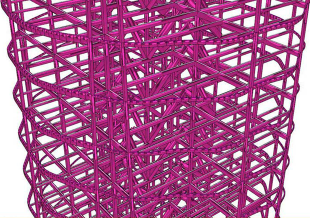Much of our focus over the past year has been on ensuring that everyone in the firm understands why embodied carbon is important, how to measure and address it, and how to discuss it with clients. Our EC community of practice hosted a firm-wide embodied-carbon summit in April 2021. We also formulated new concrete and steel specifications for EC and introduced a monthly “EC Shorts” program, in which an employee talks briefly to colleagues about work, strategies, materials or applications related to EC reduction.
Our CORE studio, which has created applications – like Beacon – that track embodied carbon in building projects, is developing new tools that will perform a variety of tasks, including design for composite and concrete beams; steel and concrete columns; and timber bays, beams and columns. These tools will automatically update EC estimates when a user alters any component of a model.











